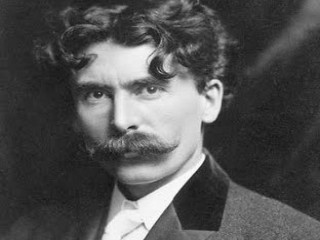
Ernest Thompson Seton biography
Date of birth : 1860-08-14
Date of death : 1946-10-23
Birthplace : South Shields, England
Nationality : English
Category : Famous Figures
Last modified : 2011-04-04
Credited as : Author, founder of Boy Scouts of America, Wild Animals I Have Known
Ernest Thompson Seton was best known as the author of Wild Animals I Have Known and as co-founder of the Boy Scouts of America.
Seton was born on August 14, 1860, in South Shields, England, the eighth of the ten sons of Alice Snowdon Thompson and Joseph Logan Thompson. At the age of 21 he took the surname Seton in the belief that his father was the true heir to the lands and titles of Lord Seton, Earl of Winton. After an appeal from his mother in 1887, he resumed the Thompson surname and began using the nom de plume Ernest Seton-Thompson on his published works; in 1901 he changed his name legally to Ernest Thompson Seton. These changes have caused confusion in identifying his earlier work.
Joseph Thompson owned a small fleet of merchant sailing ships, but when forced out of business by competition from steam-powered ships in 1866, he emigrated to Canada with his family to become a farmer. On the farm near Lindsay, Ontario, Seton developed the interest in animal life that became the basis of his career as both artist and naturalist. The Thompsons, however, were unsuccessful as farmers, and after four years they moved to Toronto; here Seton discovered the wildlife of Toronto Island and the Don River valley. His adventures in the valley may be found in Two Little Savages (1903).
In 1876 he was apprenticed to the Toronto portrait painter John Colin Forbes and began night classes at the Ontario School of Art and Design. Although he won a seven year scholarship to London's Royal Academy of Arts in January 1881, he abandoned his studies after only seven months and returned to Canada, this time to settle on his brother Arthur's Manitoba homestead. His wildlife research on the prairie resulted in the publication of his first scientific
article in 1883 and provided material for many of his later books, among them The Trail of the Sandhill Stag (1899).
Seton completed his art training between 1890 and 1896 at the Académie Julian in Paris. It was in France that he met the writer Grace Gallatin, the daughter of a San Francisco financier. They were married in New York in June 1896 and settled near Greenwich, Connecticut. Their only child was Anya Seton, the novelist. The marriage ended in divorce in 1935.
In 1898 Seton published his first book of animal stories, Wild Animals I Have Known, telling the stories of Lobo, King of Currumpaw; Silverspot, the crow; and Raggylug, the cottontail rabbit, from the animals' points of view. Lavishly illustrated with Seton's unique drawings and paintings, the book was an instant success, and Seton went on tour telling his stories and showing slides of his illustrations. For the next ten years he turned out at least one book of stories annually, including The Biography of a Grizzly; Lives of the Hunted; Monarch, the Big Bear of Tallac; Woodmyth and Fable; and Animal Heroes.
The popularity of his stories was temporarily halted in 1903 when the naturalist/philosopher John Burroughs accused him in an article in the Atlantic Monthly of "faking" his animal tales. Seton responded to this attack by investing the next five years in the research and writing of the two-volume Life Histories of Northern Animals which earned him the Camp Fire Gold Medal for 1909 and the renewed popularity of his books. Later he enlarged the Life Histories and published them in four volumes between 1925 and 1928 as Lives of Game Animals, this time earning the John Burroughs Memorial Society's Bronze Medal.
In 1902 Seton organized the Woodcraft Indians for boys in order to encourage outdoor activities, and in 1904 he presented a copy of his Birchbark Roll of the Woodcraft Indians to Sir Robert Baden-Powell, the hero of the seige of Mafeking, South Africa, asking him to help popularize Woodcraft summer camps in England. Instead, Baden-Powell introduced his own organization—the Boy Scouts— into England in 1908, incorporating most of the games and activities Seton had included in the Birchbark Roll. When it appeared that Baden-Powell intended to move the Boy Scout organization into the United States, Seton joined forces with other youth leaders to form the Boy Scouts of America in 1910, and he became the first Chief Scout. However, five years later he was forced out of the Boy Scouts because he was a pacifist.
In 1930 Seton settled on a 2,300-acre tract of land near Santa Fe, New Mexico. Here he married his second wife, Julia Moss Buttree, and with her he founded the Seton College of Indian Wisdom (later the Seton Institute of Indian Lore). Here for the next ten years they conducted summer courses in arts and crafts, outdoor activities, and leadership skills. He published his autobiography in 1940 and his last animal story book, Santana, the Hero Dog of France, in 1945. He continued to write and lecture until two months before his death on October 23, 1946.
















